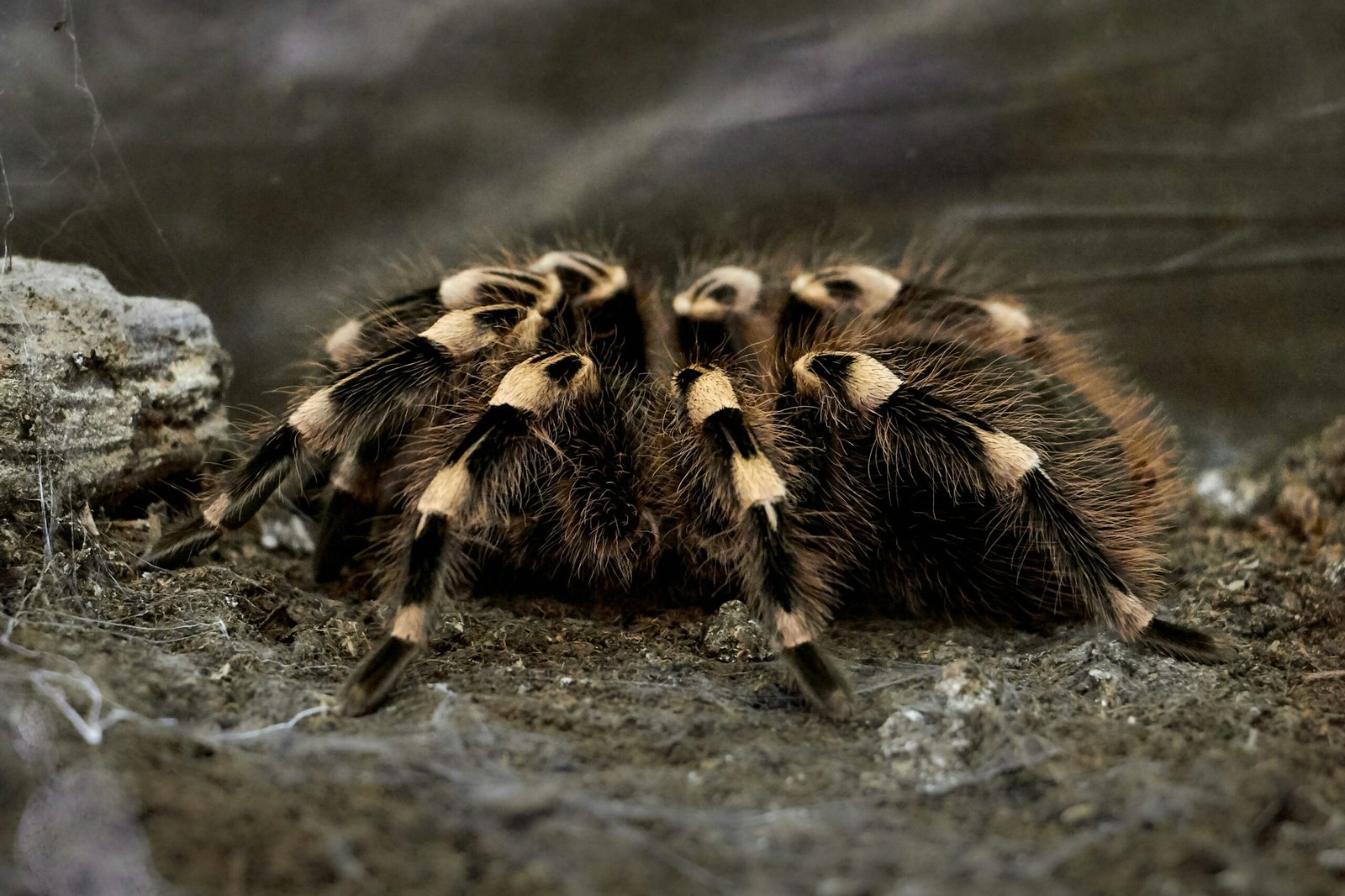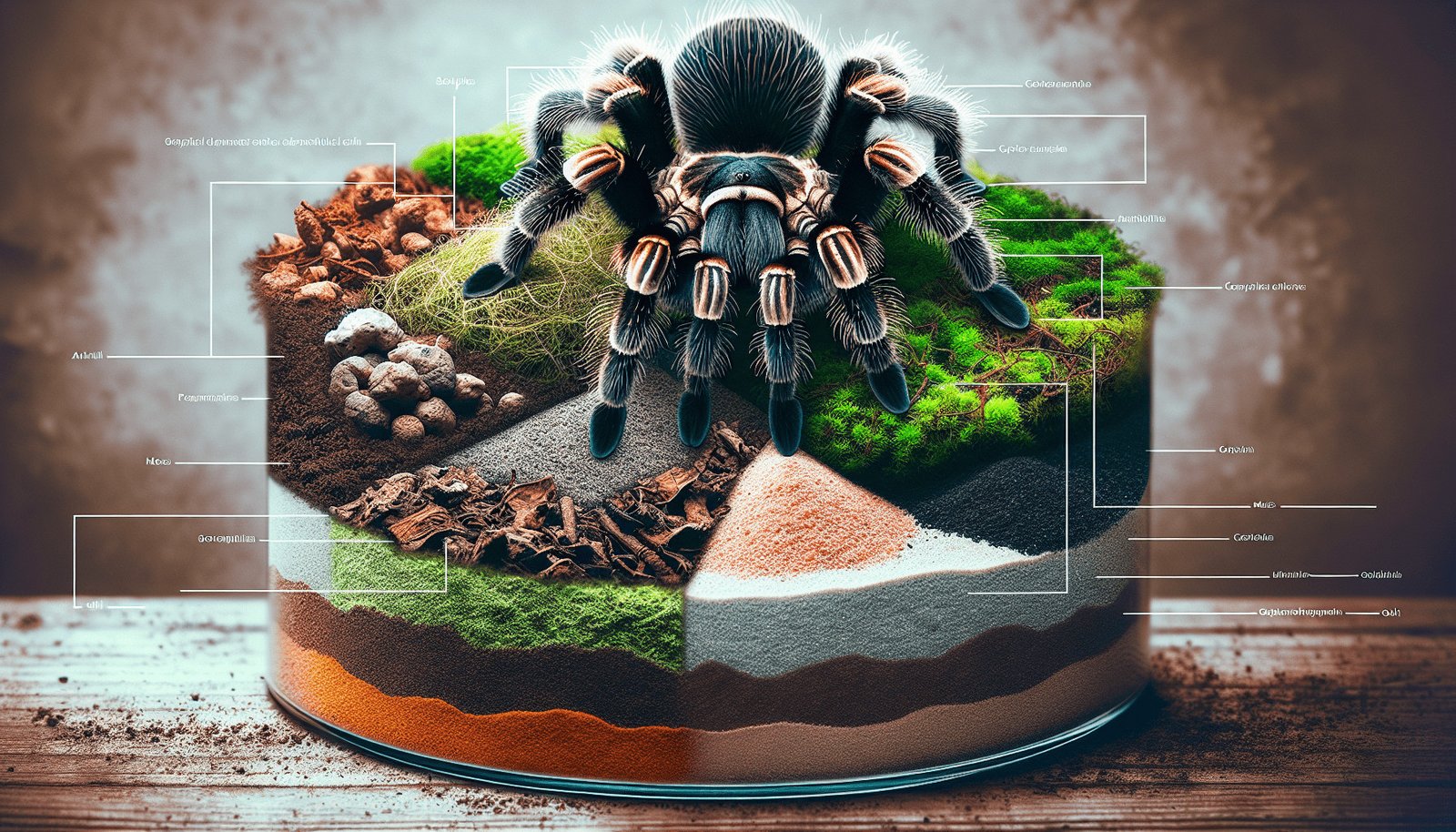Have you ever wondered how the choice of substrate could affect your tarantula’s demeanor and well-being? It might seem like a trivial detail, but the substrate in your tarantula habitat plays a crucial role in its life. Let’s unravel the complexities of this fascinating topic together and understand how simple decisions can make a world of difference for these intriguing creatures.

Understanding Tarantula Substrates
The substrate in a tarantula’s habitat isn’t just for show; it serves practical purposes. Among them are moisture retention, providing traction, and allowing natural behaviors such as digging. Not all substrates are created equal, and choosing the right one can significantly influence your tarantula’s quality of life.
What Is Substrate?
At its most basic, substrate refers to the material lining the bottom of an enclosure. For tarantulas, that means the type of bedding they live on. This choice affects hydration levels, structural support for burrowing, and even temperature regulation. Each substrate choice has its benefits and drawbacks, impacting both the tarantula’s behavior and health.
Types of Substrate
There’s a wide range of substrate options available, and choosing the most suitable one is essential. Let’s take a comprehensive look at some common types, and what they each bring to the table for your tarantula’s habitat.
Coconut Fiber
Coconut fiber, also known as coco coir, has gained popularity due to its moisture retention properties and natural appearance. It’s made from the husk of coconuts and is a sustainable, eco-friendly option.
Pros:
- Excellent for moisture retention.
- Allows for easy burrowing.
- Natural look that suits most habitats.
Cons:
- Can be a bit dusty.
- Requires regular maintenance to avoid mold.
Peat Moss
Peat moss is packed and highly absorbent, making it another favored choice for tarantula enthusiasts. It’s derived from decomposed sphagnum moss and other organic materials.
Pros:
- Retains moisture effectively.
- Generally sterile when purchased.
- Soft texture that facilitates digging.
Cons:
- Overuse can lead to a very damp environment.
- Can be acidic, affecting sensitive species.
Vermiculite
A mineral substrate option, vermiculite is often mixed with other substrates to improve drainage and humidity levels.
Pros:
- Good at maintaining humidity.
- Inorganic, so less prone to pests and mold.
- Lightweight and easy to clean.
Cons:
- Not aesthetically pleasing on its own.
- Poor traction for tarantulas.
Soil Mixes
Made to closely mimic a tarantula’s natural environment, soil mixes frequently combine several materials like organic topsoil, sand, and clay.
Pros:
- Closely resembles natural habitats.
- Allows for proper humidity and drainage.
- Encourages natural behaviors like digging.
Cons:
- Potential for mite infestation if not managed properly.
- Can become compacted over time, making burrowing difficult.
Sand
While sand is not frequently used on its own for tarantulas, it is sometimes mixed with other substrates to offer better drainage and a more natural habitat.
Pros:
- Provides drainage when mixed with other substrates.
- Natural look and feel.
Cons:
- Can be abrasive and harmful if used alone.
- Poor moisture retention.
Factors Influencing Substrate Choice
Choosing the right substrate for your tarantula depends on various factors. They each interact to form the ideal living conditions for different tarantula species.
Species-Specific Requirements
Different species have different needs. Arboreal tarantulas may require less substrate but need more climb-friendly environments, while terrestrial and burrowing species will benefit from deeper, sometimes heavier substrates.
Humidity and Temperature
Consider the humidity and temperature needs of your tarantula. Substrates like coco coir and peat moss help in maintaining humidity, which is critical for species from more tropical environments.
Ease of Maintenance
How often are you willing to change the substrate? Some substrates, like coco coir, might need frequent replacement or maintenance to prevent mold and maintain an attractive look.
Impact of Substrate on Tarantula Behavior
How does the substrate influence tarantula behavior? It turns out, quite a bit.
Digging and Burrowing
For species that dig and burrow, certain substrates like soil mixes or coco coir provide the structural support necessary to keep tunnels from collapsing.
Webbing
Some tarantulas use the substrate for anchoring their webs. Substrates that allow for good anchorage without crowding the available space can lead to healthier webbing behaviors.
Climbing and Exploring
In suitable enclosures, tarantulas actively explore, and a proper substrate allows them to secure themselves and prevent falls and injuries.

Health Implications of Substrate Type
The substrate is more than just the ground beneath your eight-legged friend; it can directly affect their health and wellbeing.
Hydration
Many substrate materials help in maintaining necessary moisture levels and hydration, which is crucial for tarantulas from humid environments. Dehydration can lead to ill health or even mortality.
Mite and Mold Control
Certain substrates are more prone to infestations and mold. Understanding and addressing these factors are critical, as mites and mold can lead to health issues and stress for your tarantula.
Safety from Injuries
Some substrates, like sand, are abrasive if used alone and can cause injuries. It’s essential to choose a substrate that provides a balance of support and safety.
Creating the Ideal Habitat
Let’s prep your tarantula’s home to ensure maximal comfort and health. It’s all about creating an environment that’s as close to their natural habitat as possible.
Mixing Substrates
Combining different substrates allows pet owners to tailor the moisture, texture, and structure of the enclosure to meet the specific needs of their tarantula.
Monitoring and Maintenance
Regular monitoring and cleaning reduce the risk of mold and mite infestations. Keeping an eye on the substrate for signs of dampness or odor ensures a healthy living environment.
Substrate Layering
Layering substrates can help create zones within the enclosure that cater to your tarantula’s behaviors, such as burrowing, climbing, or hiding.

Practical Tips and Considerations
With substrate knowledge under your belt, let’s explore some practical tips on managing and optimizing your tarantula’s living space.
Choosing the Right Depth
The depth of the substrate is crucial for burrowing species and should be generous enough to allow natural behaviors without risk of collapse.
Handling Substrate Changes
Gradually introduce new substrates to avoid stress. If a change is necessary, mix the new substrate with the old to allow your tarantula to transition more smoothly.
Recognizing Signs of Distress
Close observation of your tarantula’s behavior when a new substrate is used can provide valuable insights. A lack of activity or refusal to eat may indicate stress or dissatisfaction.
Conclusion
Understanding the impact of substrate type on your tarantula’s behavior and health is crucial for their well-being. It’s all about paying attention to your tarantula’s specific needs and preferences. Tailoring the environment accordingly ensures you have a happy and healthy tarantula making each moment in their little habitat a comfortable one. By maintaining an adaptable approach and being willing to experiment, you provide them with the best possible care. Who knew the ground they walked on could have such profound implications?
